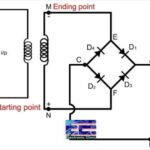The fourth generation of computers has been a revelation for our technical advancement and helped us level up in various aspects. The introduction of the fourth generation of computers has allowed for significant growth and efficiency in the processing and speed of computers. Since these computers use microprocessors instead of previous generation modules, it makes it easier, and simpler to use while providing higher powerful mechanism to work it.
The introduction of the fourth generation of computers has given a lot to us in terms of productivity and all the modern-day versions of the computers are based on it. It has significantly brought down the size of computers from the bulkier types in the past to the slick and slim ones at present. The advantages of fourth-generation computers are vastly superior and we’ll look to discuss them below in detail alongside a few drawbacks or downsides of them too for a better picture of the topic.
Advantages of Fourth Generation Computers

1. Use of microprocessors
The fourth generation of computers uses microprocessors to function which are a lot smaller in size and powerful when compared to the previous generation of computers. The use of microprocessors has increased the functioning of the computer by tenfold and allows users to get the task done in a minimal period. They also allow the overall CPU design to condense and become smaller which greatly helps in the portability and use of computers with ease even in tight spaces or desks. Microprocessors also reduce the time taken for various tasks and can allow users to deal with faster outputs.
2. Increased Storage
The previous generation of computers had smaller storage as the processors powering them could not handle large data files and tasks. That is a reason why the hard drive storage in the previous generation computers was minimal and there was an ever-growing need to find options for storing large files. Compared to the fourth generation ones, where the processors support large storage options and data files, the user doesn’t need to invest in multiple storage options and can do all his tasks from the very computer.
3. Efficient User Interface
The fourth generation of computers comes with advanced user interface options which allows for efficient and better access to run the system. The improvement of the graphical user interface in the fourth-generation computers has made the system user-friendly and easy to run. This helps the user to experience a better interface and run the high-end programs without any lagging issues of the previous generation computers. The programs become more user-friendly and intuitive while the efficiency of the programs improves multifold to allow smoother running and transition between apps and uses.
4. Faster and Reliable Connectivity
This current generation of computers, i.e. fourth generation comes with larger connectivity access and doesn’t need to be limited when looking to connect with wireless and the internet. The previous generation computers had to go through dial-up and other modem-based connectivity to be able to access the internet. The current generation has multiple access points like wireless and others that allow them to easily connect with various networks and access points with ease.
5. Multitasking
The fourth generation of computers equipped with microprocessors has a larger capacity to run multiple programs and applications at the same time without any hassle or lags. The previous era, where running one program meant you needed to close the other program and other nagging issues like lack of sync between various programs is laid to bare in the fourth generation computers. These computers allow multitasking and efficient switching between various apps to increase the productivity of the user.
Disadvantages of Fourth-Generation Computers
1. Cost factor
Since modern-day fourth-generation computers use microprocessors, the cost of the computers has escalated to the next level and is now more expensive to buy in comparison to the previous generation computers. This makes it a high-budget purchase and out of the range of normal consumers limiting the access supply for computing.
2. Complex to use
The fourth generation of computers is way more complex to run and use in comparison to the older generation of computers. They require a trained skillset and learning period to access and run the system properly. This also makes it prone to damage if handled by untrained personnel and affects the overall usability of the product.
3. Software compatibility
Since the software used to run the programs or the apps comes specifically to the generation-wise systems and computers, it at times makes the software compatibility an issue for people. The people who have files or data and are well versed with the older software might find it difficult to have the same access or software support in the fourth generation of computers resulting in a work issue.
4. Increased privacy and security concerns
With the introduction of the fourth generation of computers, almost all major works and businesses shifted to the computer-based and software-based model to note, upkeep, and maintain their work records. This can become a privacy and security issue as the data can be breached by unsolicited parties resulting in a data leak and destruction of confidential documents. The shift to technology is good for maintaining an overall sync between various work parties but can become a grave mistake if the necessary precautions are not taken.
Final Words
The development and introduction of the fourth generation of computers have allowed for far better access and usability of various software and significantly decreased the processing time for tasks. This along with vital multitasking ability is surely a boon for us. However, there are a few areas of concern that need to be taken into consideration with them.

